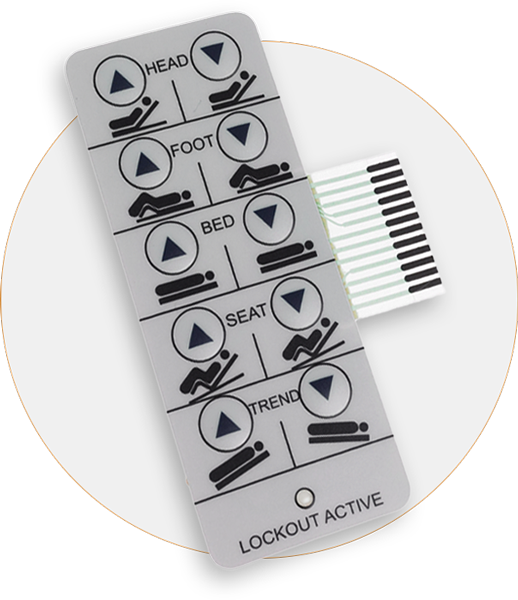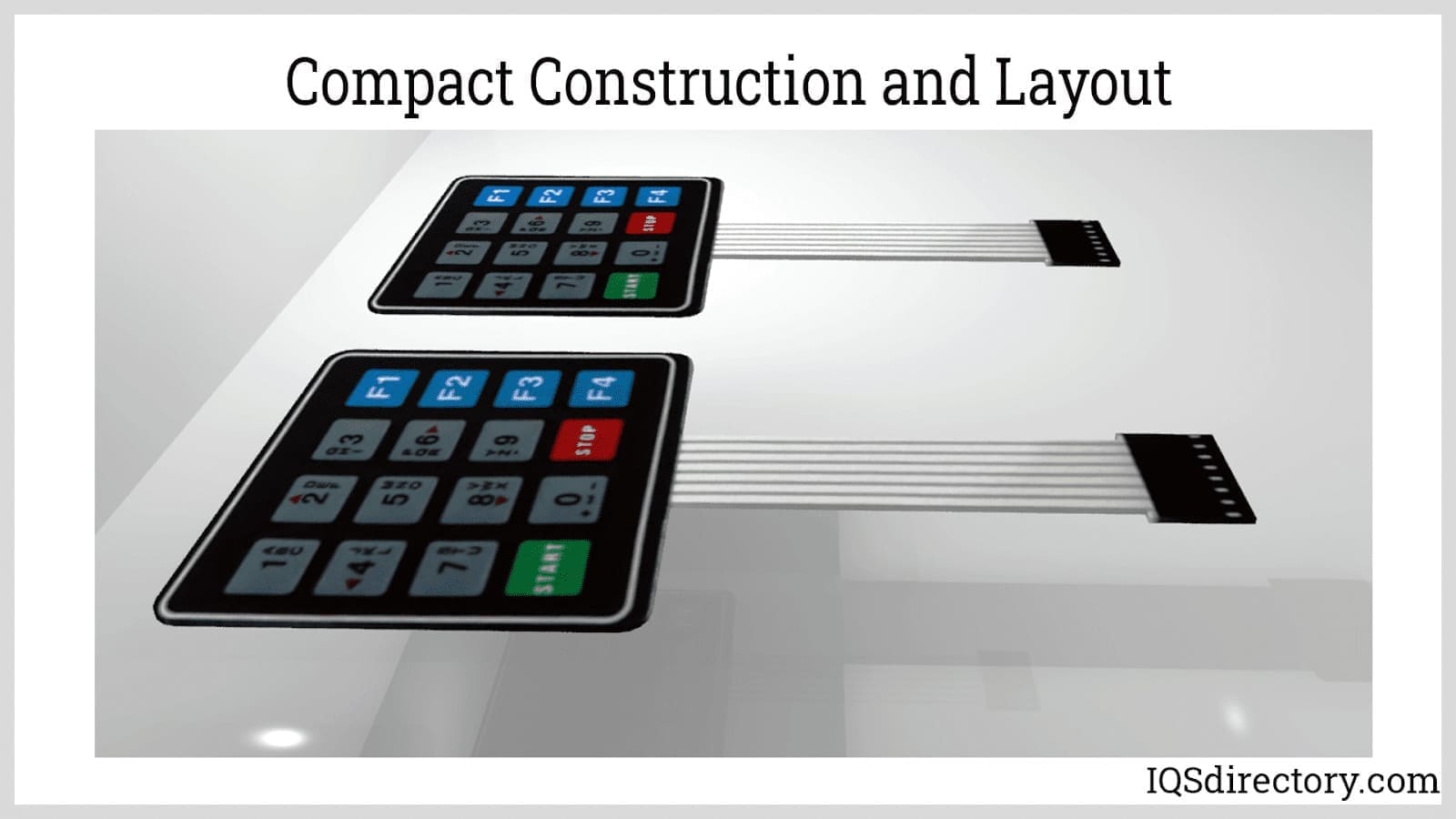Membrane Switches vs. Traditional Switches: What You Need to Know
Membrane Switches vs. Traditional Switches: What You Need to Know
Blog Article
Discover Just How Membrane Switches Function and Their Duty in Modern Electronic Devices
Membrane Switches stand for a sophisticated combination of modern technology and design within the world of modern electronics, offering as vital user interfaces in many gadgets. Included numerous layers, these buttons utilize pressure-sensitive devices to facilitate user communication. Their applications span various sectors, from customer electronics to medical devices, highlighting their flexibility and importance. Understanding the complexities of Membrane switch functionality and their wider implications in improving user experience invites additional expedition right into their layout, advantages, and the cutting-edge developments shaping their future in modern technology.
What Are Membrane Buttons?

Membrane switches are differentiated by their longevity and resistance to environmental factors, such as dust, wetness, and extreme temperature levels. They can be tailored with numerous graphics, colors, and tactile responses choices, improving customer experience while keeping visual allure - membrane switches. Additionally, the incorporation of printed circuits permits for smooth integration right into tools, improving total functionality.
The flexibility of Membrane switches appears in their ability to support both basic and complicated control features. They can include features such as LED indicators and touch-sensitive innovation, providing to details customer demands. As innovation proceeds to progress, Membrane Switches remain vital for allowing reliable and intuitive individual interfaces, thereby playing a critical function in the advancement of modern-day digital tools.
Parts of Membrane Switches
Membrane switches are composed of a number of key components that interact to develop a functional and reliable user interface. The main elements consist of the graphic overlay, sticky layer, spacer layer, and conductive traces.
The graphic overlay works as the interface, normally printed on a flexible substrate such as polyester or polycarbonate. This layer not just provides visual appeal however additionally includes responsive feedback, visual hints, and protective functions. Underneath the visuals overlay exists the sticky layer, which protects the switch to the tool and makes sure sturdiness versus environmental tensions.
The spacer layer is vital for preserving the needed space in between the visuals overlay and the circuit layer. When pressure is used, this gap permits for the activation of the switch. The conductive traces, normally made from silver or carbon, form the electric paths that finish the circuit when the button is involved.
Additionally, a support layer might be consisted of for structural support and insulation. These parts team up flawlessly, making certain that Membrane switches are both resilient and easy to use, making them vital in different modern-day electronic applications.
Just How Membrane Switches Job
Just how do Membrane Switches function efficiently within digital gadgets? Membrane Switches run on the concepts of pressure-sensitive technology, utilizing a layered construction that consists of visuals overlays, adhesive layers, and conductive components. When a customer applies stress to the button, the leading click for more info layer warps, allowing the conductive elements underneath to make get in touch with and complete an electric circuit. This activity causes the desired function within the tool.
The style of Membrane switches is important for their reliable procedure (membrane switches). The layers are meticulously crafted to give tactile comments, resilience, and resistance to ecological factors such as wetness and dust. The incorporation of domes-- tiny, elevated locations within the button-- enhances responsive response, giving individuals with a noticeable click feeling upon activation
Moreover, Membrane switches can be customized in terms of size, shape, and graphics, making them ideal for different applications. They are often utilized in control panels, medical gadgets, and customer electronic devices because of their smooth design and reliability. On the whole, the read effective functioning of Membrane switches is pivotal in enhancing user communication and guaranteeing seamless operation in modern digital tools.

Applications in Modern Instruments
Using their distinct style and capability, Membrane buttons have become important elements in a vast array of contemporary electronic devices. These versatile interfaces are employed in consumer electronics, commercial tools, clinical devices, and automobile controls, offering smooth user interaction.
In consumer electronics, Membrane switches are commonly discovered in appliances like microwaves, washing machines, and other household tools, where they enable instinctive control with a smooth account. Their inconspicuous layout helps with integration right into compact devices, improving visual appeal without compromising capability.
In industrial applications, Membrane Switches work as control board for machinery, providing durability and resistance to harsh settings. Their ability to endure wetness and pollutants makes them optimal for use in production and handling sectors.
Medical tools additionally gain from Membrane buttons, which are developed to be easy to tidy and preserve, ensuring health in scientific settings. They are usually used in diagnostic devices, client surveillance systems, and mobile medical tools, where integrity is extremely important.
Advantages of Membrane Buttons
One of the essential benefits of Membrane switches is their versatility, which permits them to be customized for a selection of applications across numerous markets. These switches can be made in various sizes and shapes, accommodating one-of-a-kind product requirements while providing smooth combination into devices. Their slim profile enables a compact and go now smooth style, often enhancing the visual appeal of digital products.
One more significant advantage is their resilience - membrane switches. Membrane buttons are usually immune to dirt, moisture, and chemicals, making them suitable for severe atmospheres. This durability expands their life expectancy contrasted to typical mechanical buttons, minimizing the requirement for regular substitutes
Additionally, Membrane Switches deal cost-effectiveness. The production process involves printing modern technologies that lessen production prices, especially for big runs. This affordability, integrated with reduced maintenance needs, makes them an attractive choice for makers.

Conclusion
In verdict, Membrane Switches represent a significant innovation in individual interface technology within modern electronic devices. As the need for user-friendly and durable interfaces proceeds to grow, the duty of Membrane switches in forming individual experience will definitely increase.
Membrane Switches represent an innovative integration of modern technology and layout within the realm of modern-day electronics, serving as vital user interfaces in various gadgets.In the realm of modern electronic devices, Membrane Switches serve as critical elements that assist in user communication with gadgets. As technology proceeds to evolve, Membrane Switches continue to be crucial for enabling effective and instinctive user interfaces, therefore playing a critical duty in the development of modern-day electronic tools.
Just how do Membrane Switches feature effectively within electronic gadgets? In general, the efficient functioning of Membrane buttons is essential in boosting individual communication and guaranteeing smooth operation in modern-day electronic tools.
Report this page